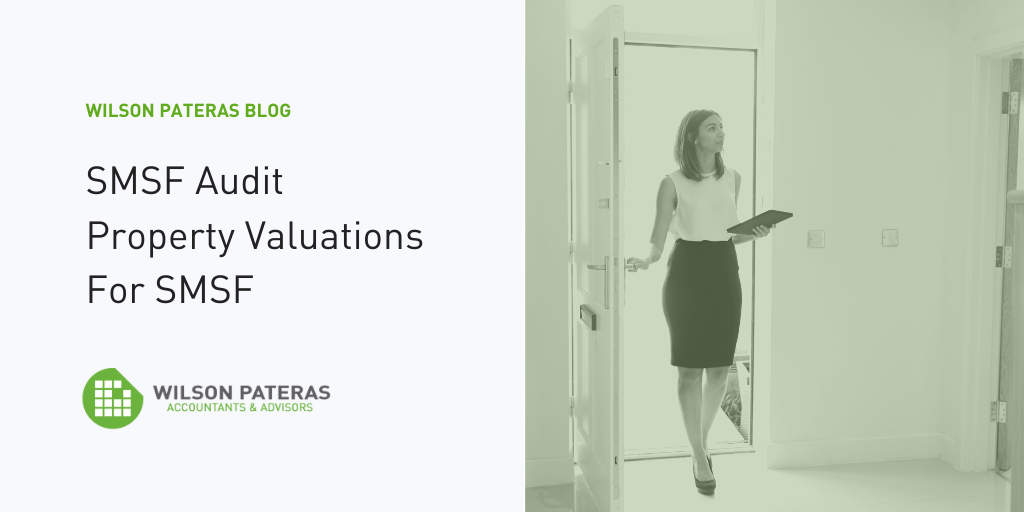If you have a self-managed super fund (SMSF) with property assets, then you have a legal requirement as a trustee of your fund to ensure that your property is appropriately valued and documented each financial year. This valuation will likely be analysed as part of your annual SMSF compliance audit process. Read on to find out more, including answers to FAQs.
What does an SMSF trustee need to consider?
SMSF trustees need to ensure that property asset valuations are objective and supported by evidence. According to the Australian Taxation Office (ATO), the valuation needs to:
- consider the implications of any factors that have affected the value of the property asset (for example, land rezoning, subdividing or development applications).
- have been undertaken in good faith, using a rational process.
- be capable of explanation to a third party.
In addition, if the property is an in-house asset, then it can’t represent more than 5% of the total value of your SMSF assets. If a valuation reveals that it is, then as a trustee you must sell it within 12 months.
An in-house asset is a loan or lease to a related party of your fund, or an investment in a related trust of your fund. In-house assets cannot be more than 5% of your fund’s total assets.
An appropriate property valuation is also especially important for assets that support account-based pensions, as well as for total super balance calculations.
Valuing SMSF residential property
There are a variety of ways to value residential property. Our recommended/preferred order is below.
1. An independent valuation by a certified residential property valuer.
2. A real estate agent valuation supported by recent sales data of comparable properties.
3. A current online assessment via a trusted property valuation site such as CoreLogic.
Valuing SMSF commercial property
As with residential property, there are a variety of ways to value residential property. Our recommended/preferred order is below.
1. An independent valuation by a certified commercial property valuer.
2. A real estate agent valuation supported by recent sales data of comparable properties.
3. A current online assessment via a trusted property valuation site such as CoreLogic.
Besides the commercial property’s valuation, additional information is required, including:
- the yield of comparable properties, supported by evidence.
- the price per lettable floor area of comparable properties, supported by evidence.
Valuing SMSF farmland property
Our recommended/preferred order for valuing farmland is below.
1. An independent valuation by a local rural agent.
2. The annual Australian Farmland Values published by the Rural Bank.
What happens if you don’t get your SMSF property appropriately valued?
Your SMSF auditor can lodge a contravention report to the Australian Taxation Office (ATO) if they conclude that your SMSF property asset has not been appropriately valued at its current market price.
They will generally do this if the discrepancy is greater than $30,000 and/or represents more than 5% of your SMSF’s assets.
How we can help
Our SMSF team at Wilson Pateras can help you with all aspects of managing your super to ensure your legal compliance.
Contact us today to find out we can help you.
This content has been prepared by Wilson Pateras to further our commitment to proactive services and advice for our clients, by providing current information and events. Any advice is of a general nature only and does not take into account your personal objectives or financial situation. Before making any decision, you should consider your particular circumstances and whether the information is suitable to your needs including by seeking professional advice. You should also read any relevant disclosure documents. Whilst every effort has been made to verify the accuracy of this information, Wilson Pateras, its officers, employees and agents disclaim all liability, to the extent permissible by law, for any error, inaccuracy in, or omission from, the information contained above including any loss or damage suffered by any person directly or indirectly through relying on this information. Liability limited by a scheme approved under Professional Standards Legislation.
Wilson Pateras Accounting Pty Ltd is a related entity of Wilson Pateras Lending and Finance (VIC) Pty Ltd and Wilson Pateras Financial Planning Pty Ltd (Wilson Pateras Group). Where you are referred to a related entity by your adviser and take up lending or financial services, your adviser and the directors and shareholders of the Wilson Pateras Group do not receive any direct remuneration or benefit as a result of these referrals but may be entitled to profits as part of their ownership in each entity. You are free to engage your own preferred professional service providers should you prefer
This content has been prepared by Wilson Pateras to further our commitment to proactive services and advice for our clients, by providing current information and events. Any advice is of a general nature only and does not take into account your personal objectives or financial situation. Before making any decision, you should consider your particular circumstances and whether the information is suitable to your needs including by seeking professional advice. You should also read any relevant disclosure documents. Whilst every effort has been made to verify the accuracy of this information, Wilson Pateras, its officers, employees and agents disclaim all liability, to the extent permissible by law, for any error, inaccuracy in, or omission from, the information contained above including any loss or damage suffered by any person directly or indirectly through relying on this information. Liability limited by a scheme approved under Professional Standards Legislation.
